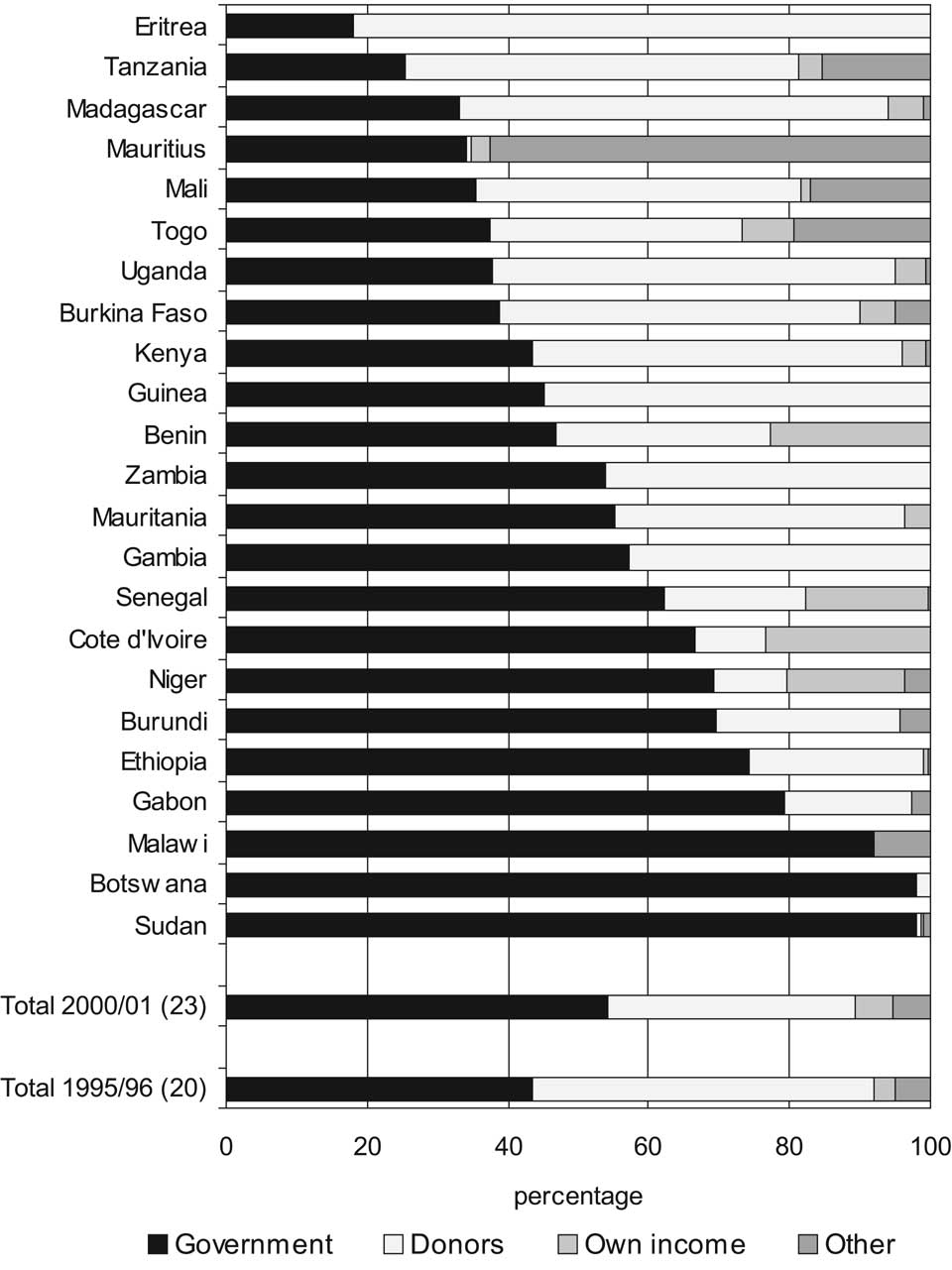
Figure 8-6. Country-level sources of funding in sub-Saharan Africa, 1995/96 and 2000. Source: Beintema and Stads, 2006.
Notes : Figure includes only funding data from the main agricultural research agencies in each of the respective countries. Combined, these agencies accounted for 76% of total spending for the 23-country sample in 2000. Data for West Africa, with the exception of Nigeria, are for 2001.
since the late 1990s and it is unlikely that the high level of donor support will continue indefinitely.
8.2 Impacts of AKST Investments
The purpose of undertaking and impact assessment of agricultural AKST depends on when the assessment is done in relation to the project cycle. It can be undertaken before initiating the research (ex-ante) or after completion of the research activity (ex-post). Ex-ante impact studies (proactive) can indicate the potential benefits from research and, therefore, assist managers in planning, priority setting and, consequently, in allocating scarce resources. They can also provide a framework for gathering information to carry out an effective ex-post evaluation. Ex-post studies (reactive) can demonstrate the impacts of past investments in achieving the broader social and economic benefits. Most commonly, ex-post impact assessments are carried out because decision makers and research managers usually require them as a precondition for support. They are undertaken to (1) help managers by providing better and more convincing advice on strategic decisions about future AKST investment;
(2) make scientists and researchers aware of the broader implications, if any, of their research; (3) Identify weak links in the research to affect pathways; and (4) better inform managers on the complementarities and tradeoffs between different activities within a research program (Maredia et al.,2001).
8.2.1 Conceptual framework
AKST investments generate different outputs including technologies of various types, management tools and practices, information, and improved human resources. In the literature the term impact is used in many different ways (DANIDA, 1994; Cracknell, 1996; Pingali, 2001). In this chapter we refer to impact of AKST investment as the broad long-term economic, social and environmental effects (SPIA, 2001). Impact assessment is a process of measuring whether a research program has produced its intended effects, such as increase in production and/or income, improvement in the sustainability of production systems (Anderson and Herdt, 1990) or improvements in livelihood strategies. In any comprehensive impact assessment, it is necessary to differentiate between the research results (outputs) and the contribution of research to development efforts (outcomes) and both aspects should be addressed simultaneously. A conceptual framework for assessing impacts (Figure 8-7) incorporates the multifaceted consequences of AKST investment in terms of both institutional and developmental impacts including spillover effects. This framework recognizes the multiple impacts of AKST investments and the need for multi-criteria analysis as well as RORs earned by such investments. A comprehensive impact assessment requires multiple techniques using both qualitative and quantitative assessment. This means that not all impacts associated with AKST investment can be quantified and valued in monetary terms, although new techniques are emerging that could complement ROR measures especially in valuing social and environmental consequences (Anandajayasekeram et al., 2007). There are also concerns about exclusively reliance on ROR for decision making. The portfolio approach considers the internal rates of return across projects rather than considering them in isolation and aims to maximize the expected returns to the entire AKST investment. Despite its shortcomings the ROR to investment is the most commonly used measure to compare the relative performance of investments and a frequently used measure of research efficiency. Most literature on impact assessment of AKST investment is largely based on RORs and these studies are assessed in the following sections (Alston et al., 2000a; Anandajayasekeram et al., 2007).
8.2.2 Economic impact assessment
Economic impact measures economic benefits produced by an AKST project or program and relates these benefits with the economic costs associated with the same project or program. This information is used to compute measures like benefit-cost ratio, internal rate of return (IRR) and net present value of benefits (NPV). Economic impact evaluations are intended to measure whether a project or program actually had (or expected to have) an economic impact and compare this impact with project or program costs. They do not measure whether it was designed or managed and ex-